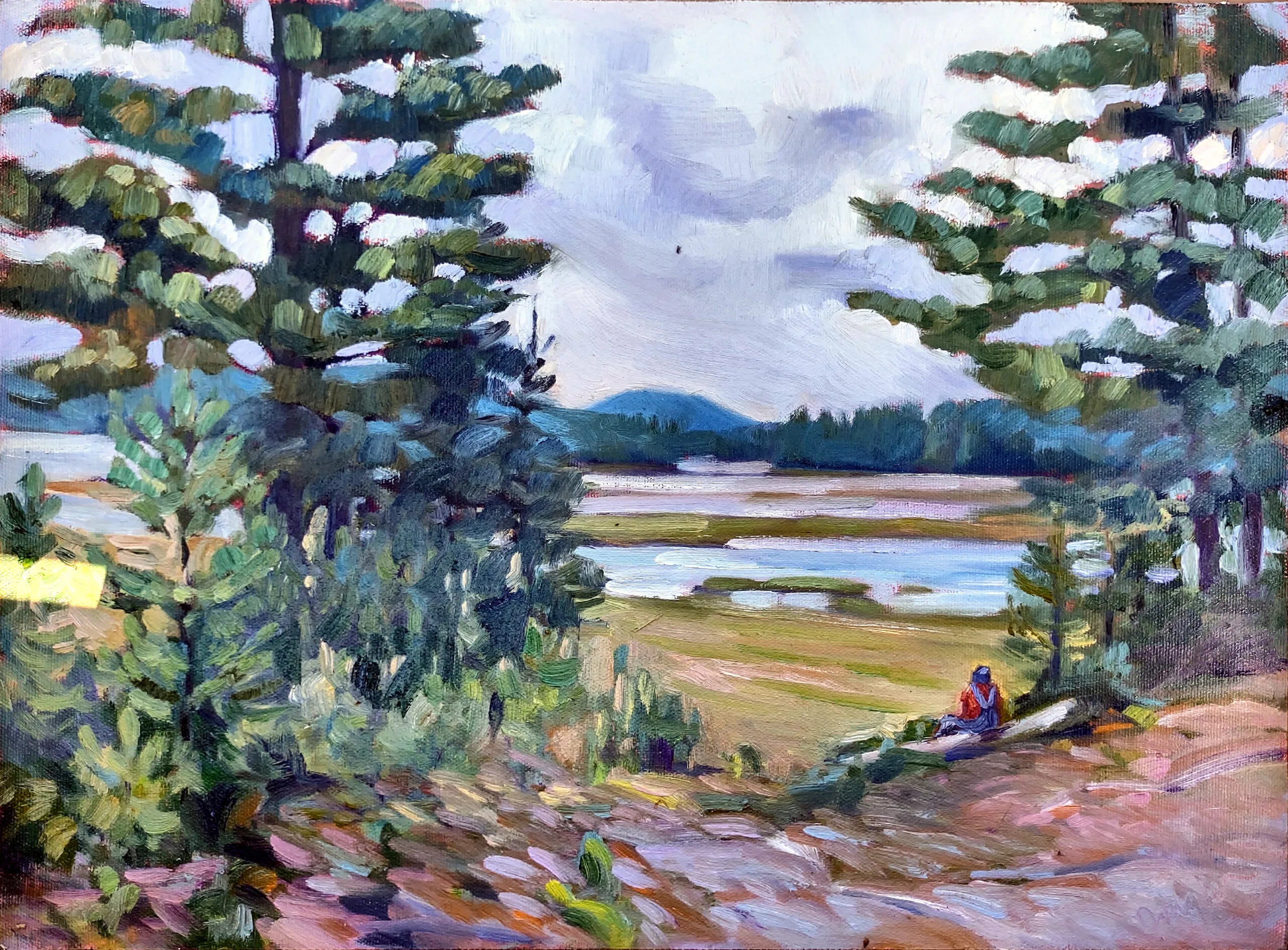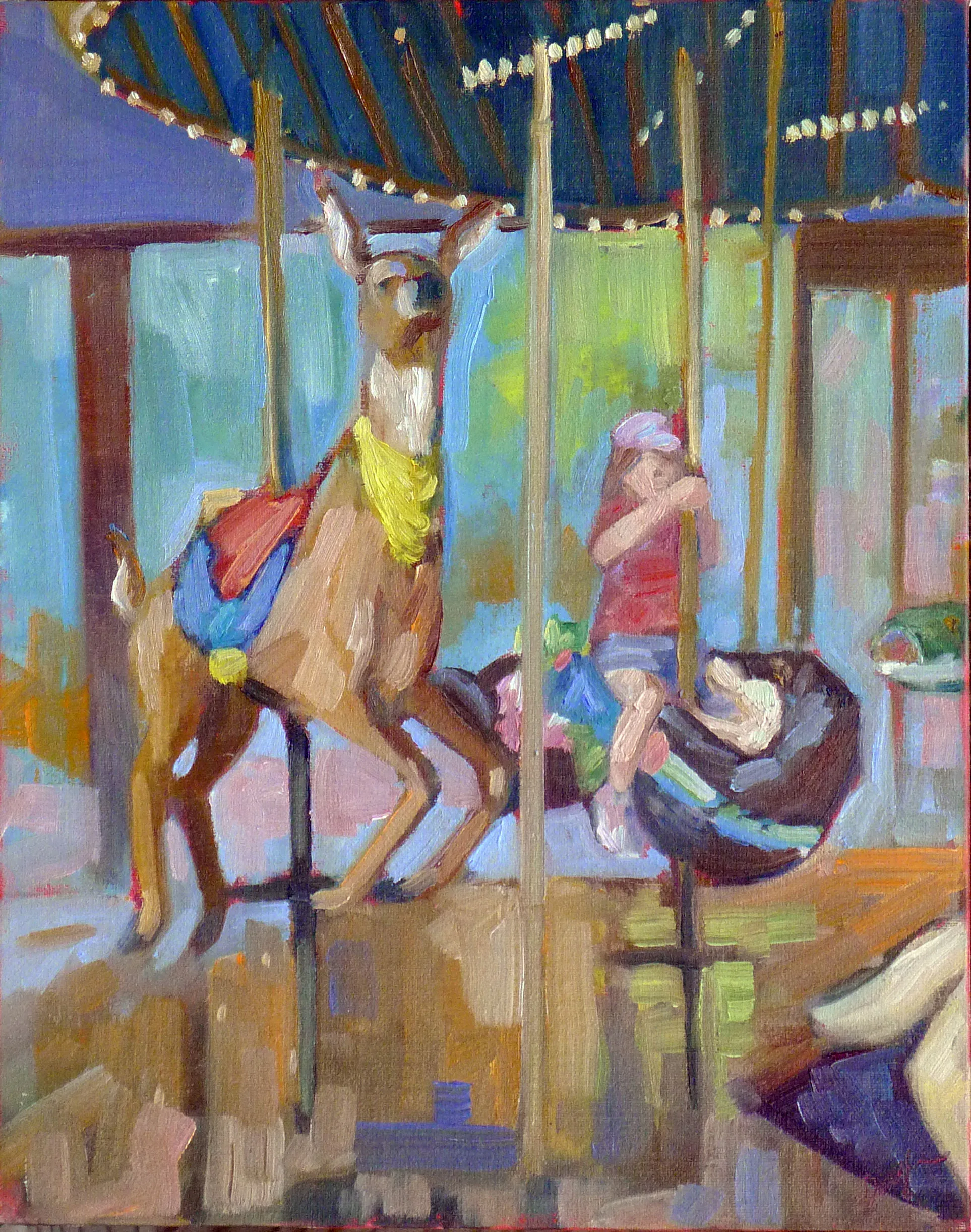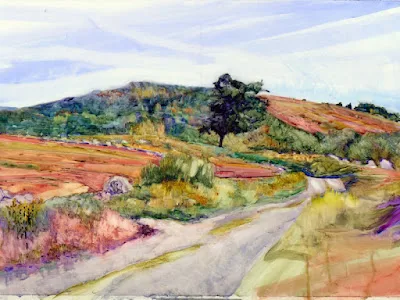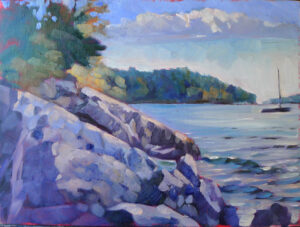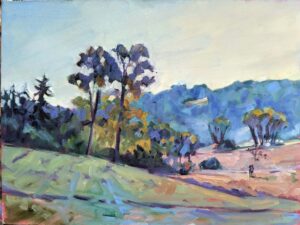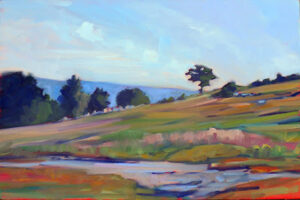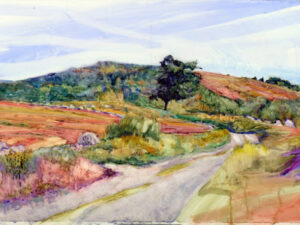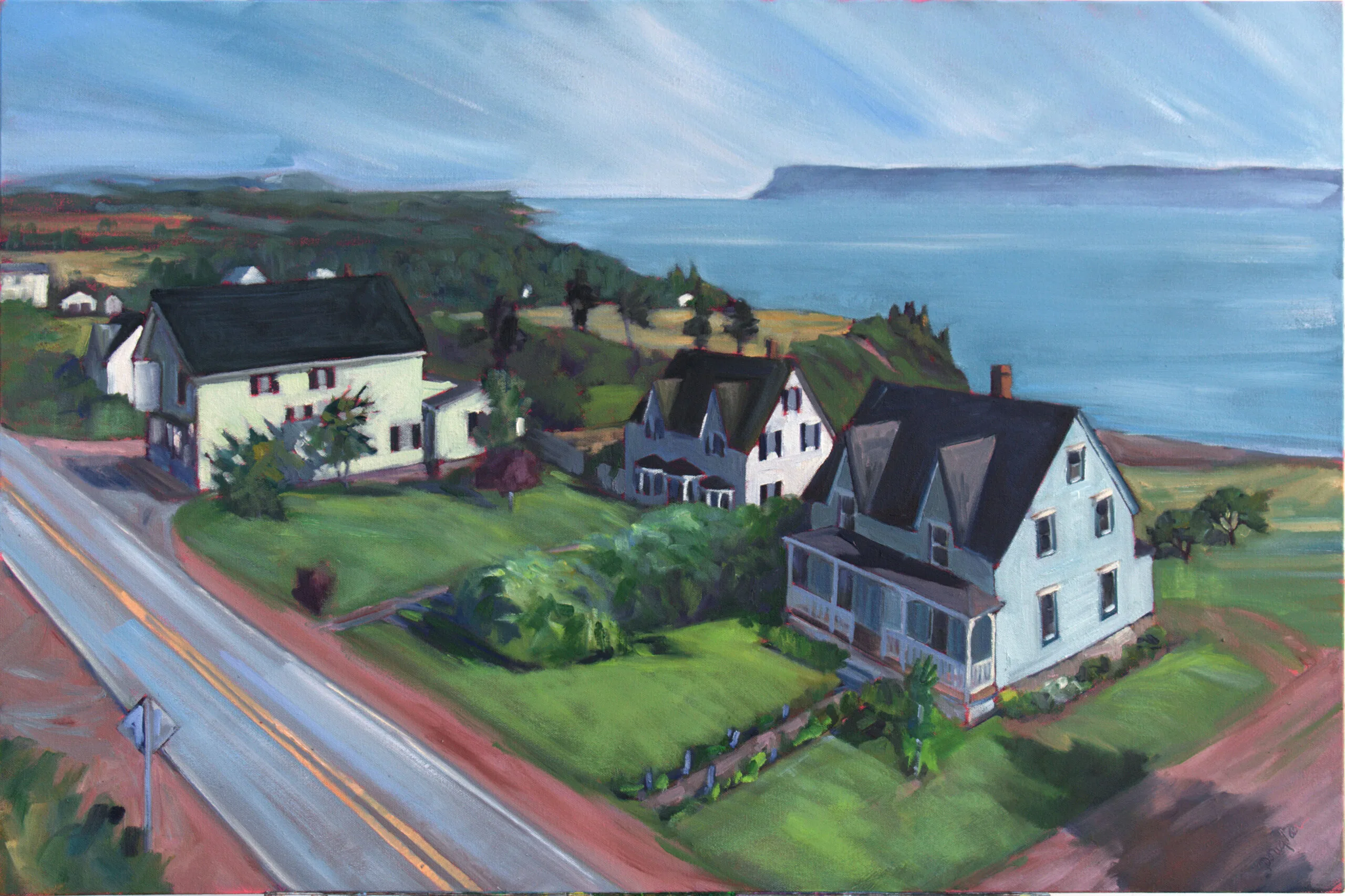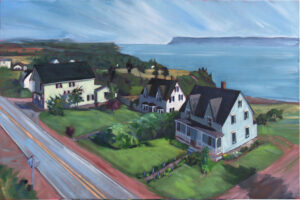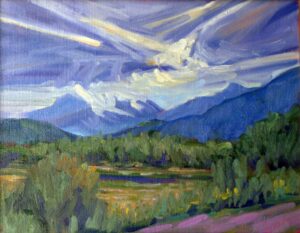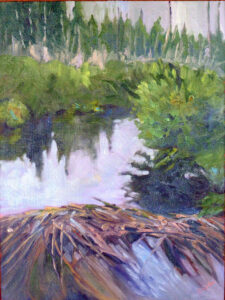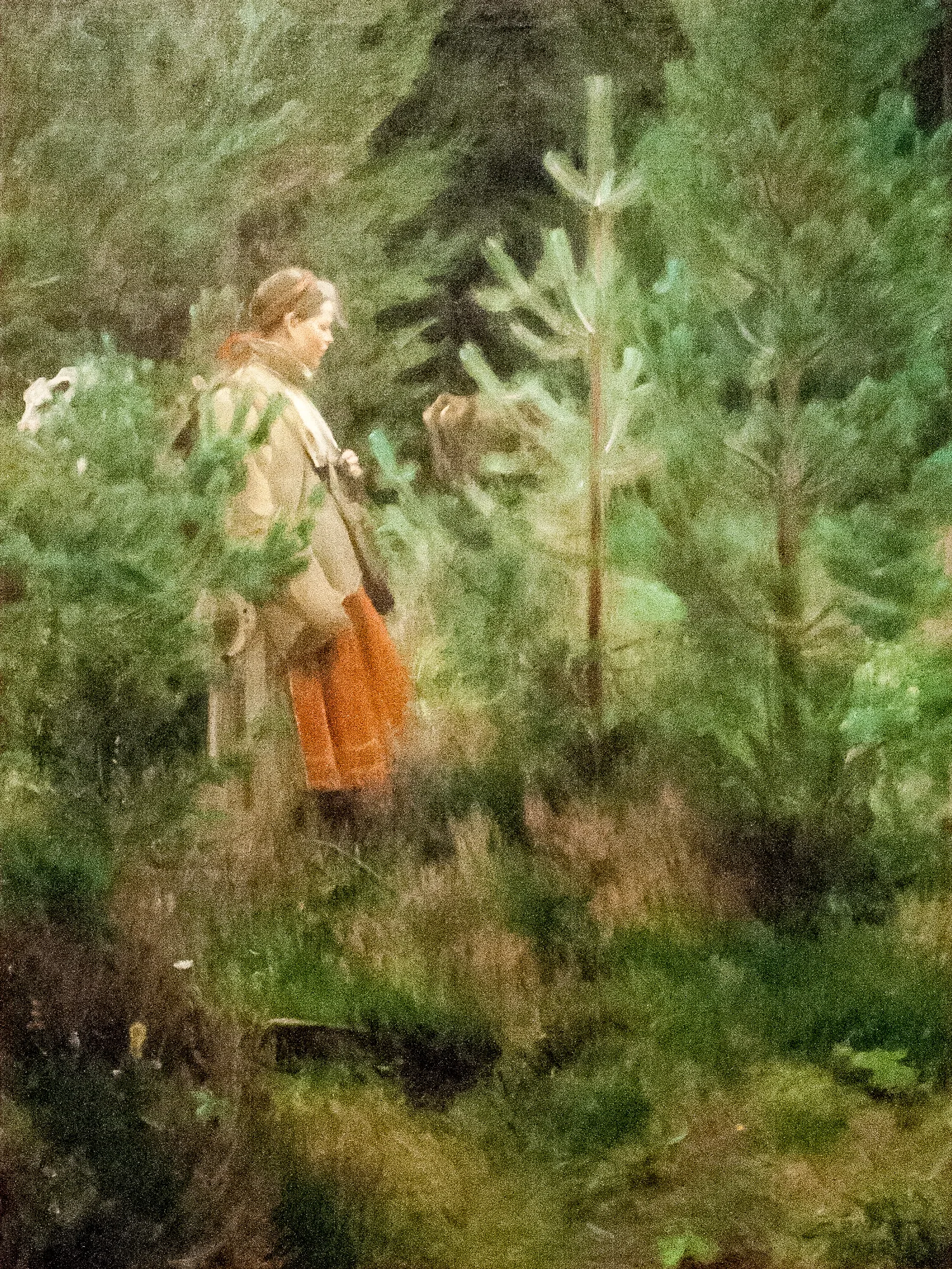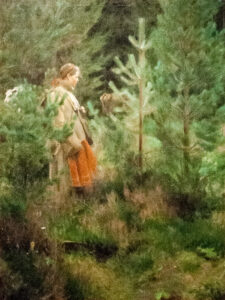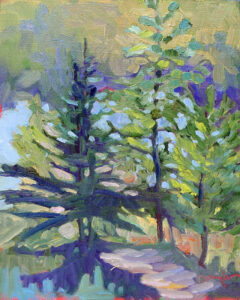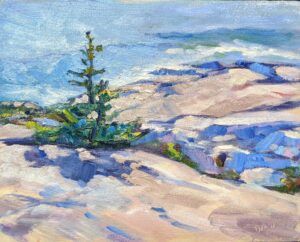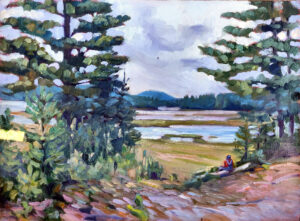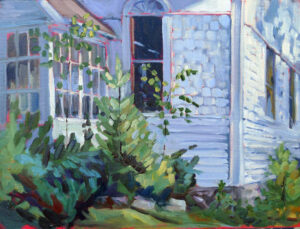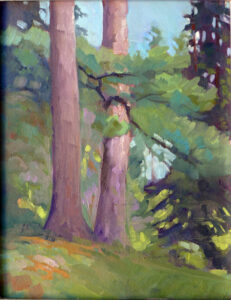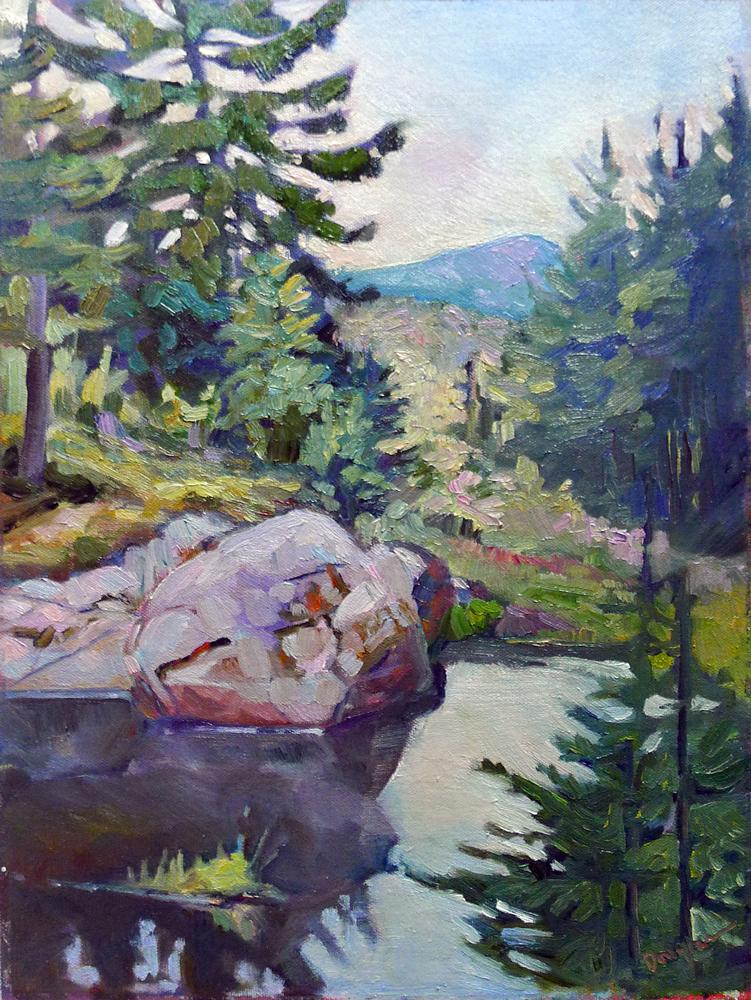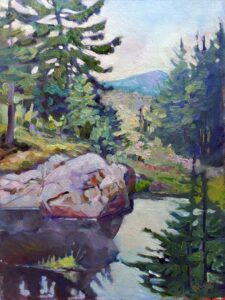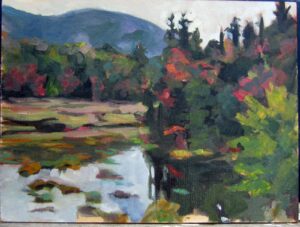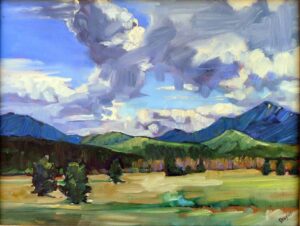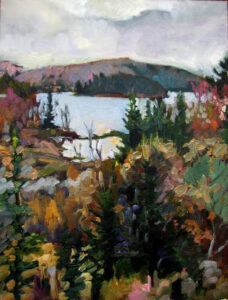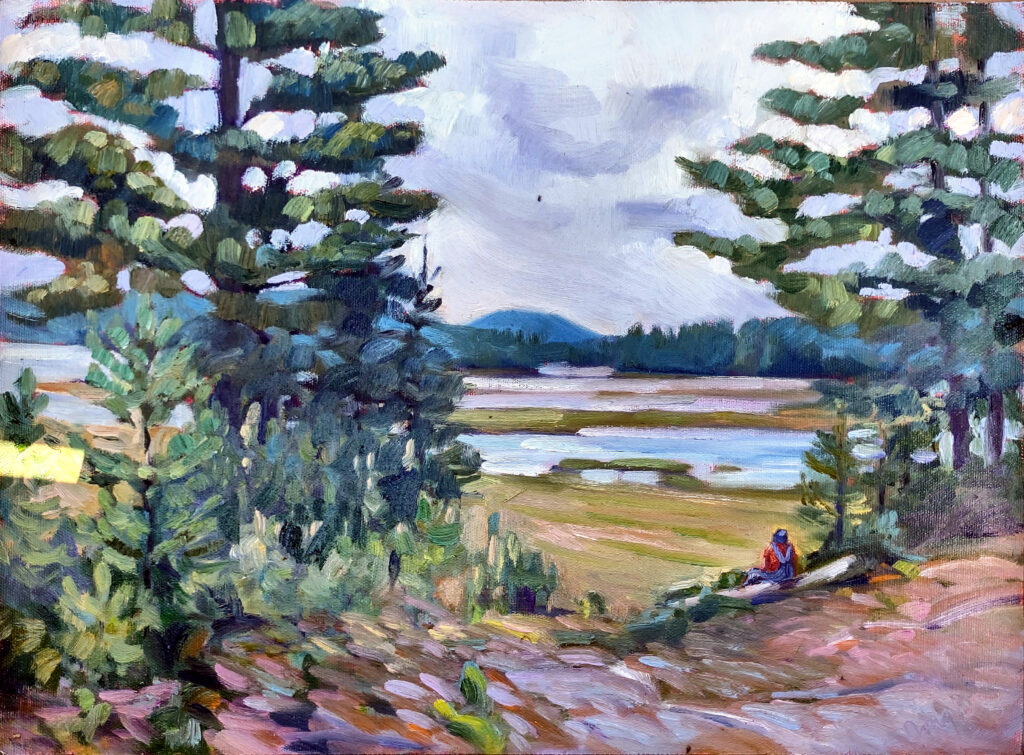
Beth Carr, who is both my student and my friend, is planning a trip to Jay, in Essex County, NY. As she knows the Adirondacks were once my Happy Hunting Grounds, she asked me for recommendations of places to paint. I suggested a few, but more importantly, I introduced her to the doyenne of Adirondack plein air painting, Sandra Hildreth.
Two years ago, Sandy took me for a long ride into the forest—north from Paul Smiths, NY and then eight miles down a rough logging track. From there we shouldered our backpacks and hiked a scant eighth of a mile to a point overlooking Madawaska Pond. The money shot (of course) was a view of Buck Mountain in the distance. But what interested me most was the tree nursery in the foreground.
I’d like to go back. Alas, Sandy tells me the road is washed out. I guess nothing lasts forever.
I’ve painted many things that are now gone, including the beaver dam at Quebec Brook and the lobster pound at Tenants Harbor. I suppose I could cultivate a Buddhist detachment, but usually these losses surprise me and make me sad.
The upside to this is that rotten times don’t last forever, either. Like everyone, I occasionally get into a funk where I wonder why I ever thought I could paint. I’ve been around long enough to realize that these too shall pass. I don’t particularly like Ecclesiastes; it’s depressing. However, Solomon is right in saying that there’s a time for everything. Plus ça change, plus c’est la même.
Which leads me full circle to those baby trees—I wonder how they’re doing?
Reserve your spot now for a workshop in 2025:
- Advanced Plein Air Painting, Rockport, ME, July 7-11, 2025.
- Sea and Sky at Acadia National Park, August 3-8, 2025.
- Find Your Authentic Voice in Plein Air, Berkshires, MA, August 11-15, 2025.
- Immersive In-Person Fall Workshop, Rockport, ME, October 6-10, 2025.

